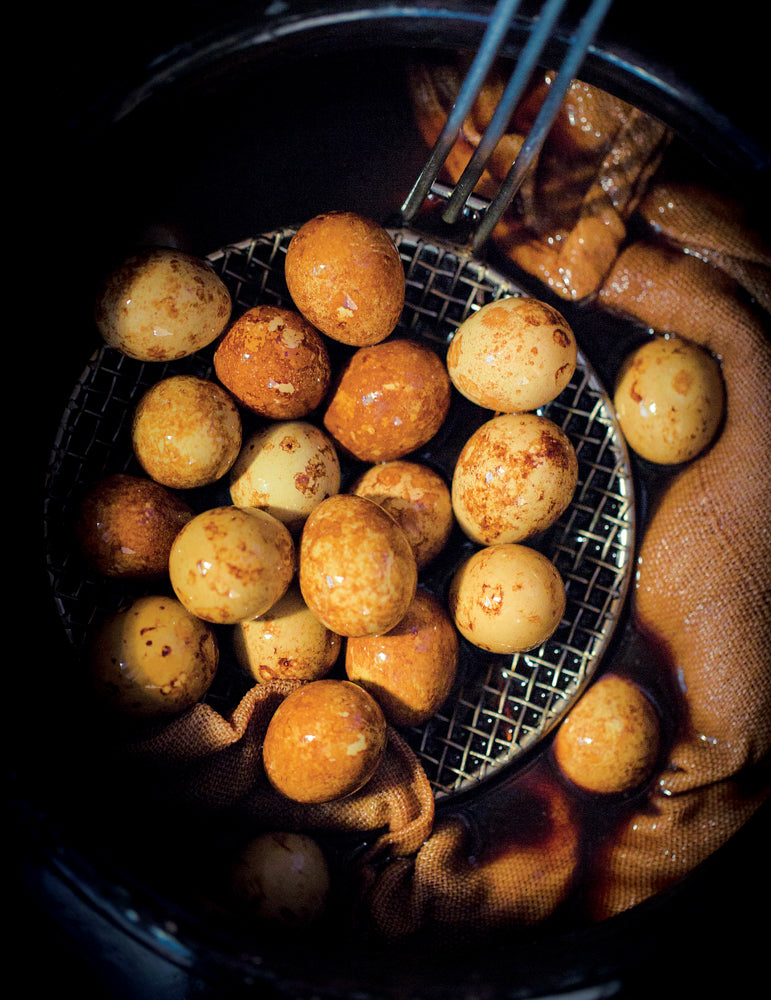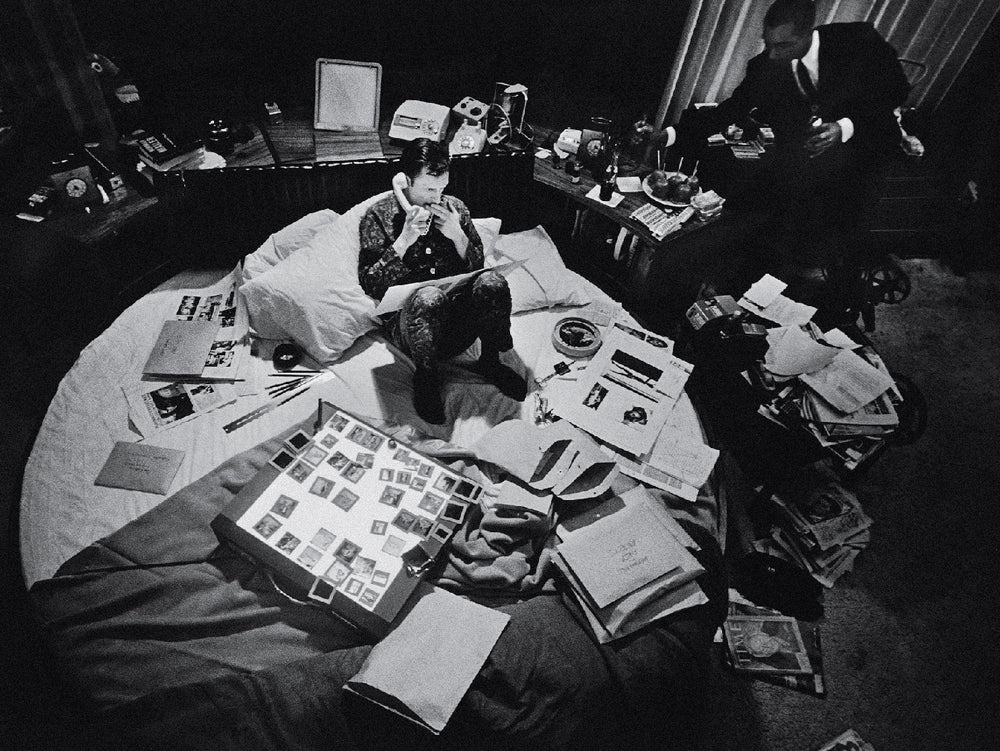
The Menu At Benu
THE MENU AT BENU

San Francisco superchef Corey Lee’s restaurant just received its third Michelin star. In an exclusive excerpt from his new book, Lee slices and dices its appeal.
When we first opened Benu, people often asked me, “What kind of restaurant is it?” The question always made me a bit uneasy. If I tried answering with any sort of detail, I could see people tuning out; they wanted a term or category they understood, or had at least heard before. So I used words like “contemporary” and “modern American.” They seemed to be satisfied with those, although I’m not sure if anyone really knows what they mean. I certainly don’t.
The truth is, when we first opened, I had no idea what kind of restaurant Benu would be. I knew some of the dishes I wanted to make, and some ingredients I wanted to feature, but I didn’t know why, or if those things even qualified in defining a cuisine. What I did know was how I wanted diners to feel. I wanted them to feel comfortable and relaxed. To feel taken care of, but not pampered in the traditional, fine-dining sense. I wanted them to be excited, for there to be a sense of discovery, and also to find warm familiarity in our food. But those things don’t make up a genre either.
Many chefs come to San Francisco and find inspiration in the local produce. They shop religiously at the farmers’ market, work closely with local purveyors, and develop a style of cooking that’s informed by those relationships and guided by the seasons. I love that kind of cooking, and it's the backbone of our city’s cuisine. However, I had just spent a decade in Napa Valley, surrounded by agriculture, at a restaurant that ran its own farm. We planted and harvested our own vegetables, picked fruit just hours before using it, and engaged in heirloom gardening. I already knew what it was to have an intimate relationship with the land, to work in tandem with its cycles, and cook food that was driven by the morning’s harvest. So it would be disingenuous to say I was suddenly moved by the produce when I came to San Francisco — that epiphany had happened years ago, when I first arrived in California. And while Benu relies on having access to the bounty of our area, that is not what actually inspires the cuisine.

“The thousand-year-old-egg, or pidan, is one of those traditional Asian foods you can’t be indifferent about. I love that this polarizing dishes exists and always confront diners with Benu’s beginner's version of it for their first course. It sets an adventurous tone for what’s to come. — Corey Lee”
As Benu became more settled, and as I got more familiar with San Francisco, I came to realize there was a synergy between the restaurant and the location that I had not anticipated, one that had developed naturally. Benu would be out of place in a rural setting like the Napa Valley or some remote locale along the Pacific coast. It’s a restaurant that belongs in a modern city, and befits a lively one with a long history of diversity, cultural exchange, and cosmopolitanism. San Francisco was first European, then Mexican, and later the gateway city between America and the Far East. And, more than any other American city I know, San Francisco is a cultural amalgamation. Sure, New York and LA are melting pots and have huge immigrant populations, but the various ethnicities in those cities have formed enclave communities separate from the mainstream: East LA might as well be Mexico; parts of Queens could be China or Korea. San Francisco’s ethnic groups are much more integrated into the rest of society, resulting in a culture unique to the city. I think there’s an urban beauty in that, and I feel that Benu belongs here.
Benu is very much a restaurant that’s influenced by different cultures. Like San Francisco and its environs, which has the highest Asian concentration of any city in the US, there’s a distinct Eastern influence. Sense of place is expressed not so much in the locality of the products we use, but through the spirit and the cultural influences of our region that permeate our food. The cooking at Benu often explores how Asian flavors, ideas, and aesthetics can harmonize with Western ones. In that way, I think it reflects a bit of my bicultural background as well. And in the process of establishing an identity for the restaurant, I came to a better understanding of my own. These days, when people ask me that dreaded question, “What kind of restaurant is Benu?” I try to convey what I’ve explained here. People often respond, “Oh, I see. So, fusion.” I just smile and say, “Yes, fusion.”
In our new book, Benu, you have the best answer I can give, explained through the progression of one of our menus. The dishes are from throughout the year to give you a broader sampling of our cooking. And there are a few more courses than we would normally serve but, really, who cares? Each chapter, or “course,” has a short narrative that explains the composition, an ingredient, or the inspiration behind it. There are recipes, but this is not a book intended to be cooked from. It is meant to archive and share with you something that our team works so tirelessly to execute every day. Food is an ephemeral form of expression, and I wanted to document some of our hard work.
Thousand-Year-Old Quail Egg, Potage, Ginger


Ingredients
- brine of 5% salt, 4% lye, and 1% pu-erh tea leaves
- quail eggs
For the pickled ginger
- 2 parts water
- 1 part champagne vinegar
- 1 part sugar
- peeled fresh young ginger
For the potage
- 5g butter
- 15g bacon
- 100g Savoy cabbage, sliced
- 30g onion, chopped
- 1g salt
- small pinch cayenne pepper
- 80g chicken stock
- 10g cream
For the ginger cream
- 200g cream
- 300g water
- 6g salt
- 6g sugar
- 4g xanthan gum
- 20g fresh ginger juice
- 4g Versawhip
Instructions
Make enough brine to generously cover the eggs. Allow to soak for 12 days. Rinse thoroughly under running, room-temperature water until the water runs clear. Dry the eggs, place them in an airtight plastic bag, and store inside an opaque container. Age for 4 weeks at 68–77ºF/20–25ºC.
To make the pickled ginger, put the water, vinegar, and sugar in a saucepan and bring to a boil. Meanwhile, slice the ginger thinly and place in a bowl. Pour the boiling liquid over the ginger. Allow to cool to room temperature, then vacuum pack. Store in a refrigerator for at least 3 days.
To make the potage, melt the butter in a pan and sweat the bacon, cabbage, and onion. Season with salt and cayenne pepper. Cover with the chicken stock and cream. Bring to a boil, cover with a lid, and simmer until tender (about 45 minutes). Remove the bacon and discard. Purée the mixture left in the pan and pass through a chinois.
To make the ginger cream, put the cream and water in a pan and bring to a simmer. Transfer to a blender, add the salt, sugar, and xanthan gum, and blend on a low setting for 4 minutes to hydrate the gum. Add the ginger juice and Versawhip. Transfer into an ISI canister and charge with 2 cream chargers.
When you’re ready to serve, cook the eggs in boiling water for 1 minute. Shock in iced water, then peel. Cut the eggs in half and season with salt and the juice from the pickled ginger. Chop a little bit of the pickled ginger and put a small amount in the center of each bowl. Place a dollop of the whipped ginger cream on top of the ginger and place the quail eggs on top. Serve the potage piping hot.


